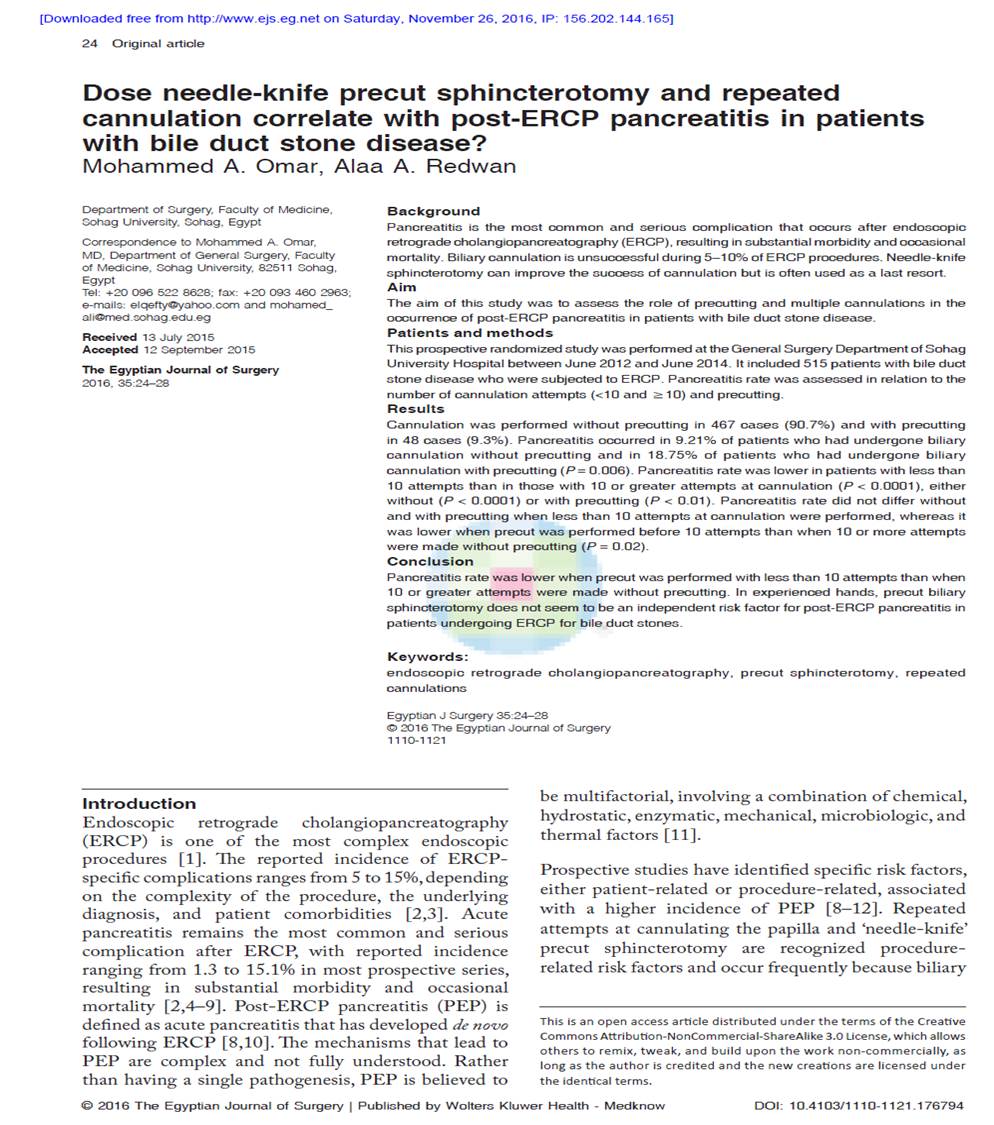Background
Pancreatitis is the most common and serious complication that occurs after endoscopic retrograde cholangiopancreatography (ERCP), resulting in substantial morbidity and occasional mortality. Biliary cannulation is unsuccessful during 5–10% of ERCP procedures. Needle-knife sphincterotomy can improve the success of cannulation but is often used as a last resort.
Aim The aim of this study was to assess the role of precutting and multiple cannulations in the occurrence of post-ERCP pancreatitis in patients with bile duct stone disease.
Patients and methods This prospective randomized study was performed at the General Surgery Department of Sohag University Hospital between June 2012 and June 2014. It included 515 patients with bile duct stone disease who were subjected to ERCP. Pancreatitis rate was assessed in relation to the number of cannulation attempts (<10 and ≥10) and precutting.
Results
Cannulation was performed without precutting in 467 cases (90.7%) and with precutting in 48 cases (9.3%). Pancreatitis occurred in 9.21% of patients who had undergone biliary cannulation without precutting and in 18.75% of patients who had undergone biliary cannulation with precutting (P = 0.006). Pancreatitis rate was lower in patients with less than 10 attempts than in those with 10 or greater attempts at cannulation (P < 0.0001), either without (P < 0.0001) or with precutting (P < 0.01). Pancreatitis rate did not differ without and with precutting when less than 10 attempts at cannulation were performed, whereas it was lower when precut was performed before 10 attempts than when 10 or more attempts were made without precutting (P = 0.02).
Conclusion
Pancreatitis rate was lower when precut was performed with less than 10 attempts than when10 or greater attempts were made without precutting. In experienced hands, precut biliary sphincterotomy does not seem to be an independent risk factor for post-ERCP pancreatitis in patients undergoing ERCP for bile duct stones.


